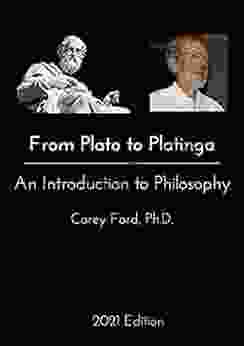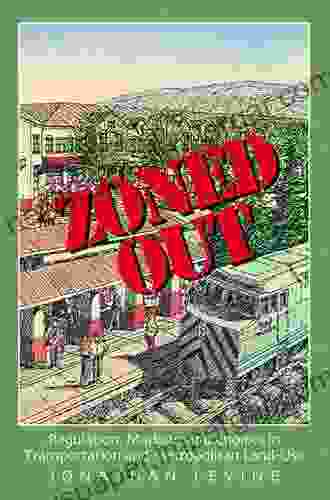Sensibilities and Design in Early Modern Britain and Early America: A Sensory Odyssey

5 out of 5
| Language | : | English |
| File size | : | 23449 KB |
| Text-to-Speech | : | Enabled |
| Screen Reader | : | Supported |
| Enhanced typesetting | : | Enabled |
| Word Wise | : | Enabled |
| Lending | : | Enabled |
| Print length | : | 378 pages |
The Interwoven Tapestry of Culture and Design
In the tapestry of history, where threads of culture and design intertwine, there is a captivating chapter waiting to be unraveled. This chapter, explored in the illuminating book "Sensibilities and Design in Early Modern Britain and Early America," delves into the profound relationship between the sensory experiences of individuals and the design choices they made during the 17th and 18th centuries.
Through a sensory lens, this book invites readers to embark on a journey that weaves together the complexities of embodied cognition and material culture. It unveils how the spaces we inhabit, the objects we surround ourselves with, and the landscapes we traverse shape our very emotions and identities.
Sensory Spaces: A Crucible of Emotion
Within the domestic interiors of early modern Britain and America, sensory spaces emerged as crucibles where emotions were both kindled and tempered. The arrangement of furniture, the textures of fabrics, the play of light and shadow, and the scents that permeated the air all conspired to create evocative environments that stirred the senses.
Bedrooms, for instance, were not merely places of slumber but sanctuaries of intimacy and repose. They were adorned with rich textiles, soft furnishings, and delicate fragrances that enveloped occupants in a cocoon of comfort and privacy. In contrast, parlors served as vibrant hubs of social interaction, where bright colors, bold patterns, and opulent furnishings stimulated conversation and created a sense of grandeur.
Landscapes of Sensory Immersion
Beyond the confines of domestic spaces, the landscapes of early modern Britain and America offered equally potent sensory experiences. Gardens, parks, and other designed landscapes were meticulously crafted to elicit specific emotions and engage the senses.
The formal gardens of English country estates, for example, with their symmetrical layouts, manicured lawns, and fragrant flowerbeds, provided a serene and harmonious retreat from the bustling urban centers. In contrast, the wilderness of the American frontier, with its untamed forests, rugged mountains, and roaring rivers, evoked a sense of awe and wonder.
Embodied Cognition: Shaping Our Perceptions
The book "Sensibilities and Design in Early Modern Britain and Early America" underscores the pivotal role of embodied cognition in shaping our perceptions and experiences. It explores how our physical interactions with our surroundings, both built and natural, influence our thoughts, feelings, and behaviors.
The textures of fabrics against our skin, the weight of objects in our hands, the sounds of our environment, and the scents we inhale all contribute to a cumulative sensory experience that informs our understanding of the world. This embodied cognition, in turn, shapes the design choices we make, creating an intimate feedback loop between our bodies and our surroundings.
Cultural Identity and the Material World
The relationship between sensibilities and design also sheds light on the complexities of cultural identity. The objects we possess and the spaces we inhabit reflect our values, beliefs, and aspirations. They serve as tangible expressions of our unique cultural heritage and contribute to a sense of collective identity.
In early modern Britain and America, the design of domestic interiors, landscapes, and public spaces played a crucial role in fostering a sense of belonging. By creating environments that resonated with their cultural values, individuals and communities reinforced their shared identity and strengthened their social bonds.
A Sensory Legacy: Echoes in Contemporary Design
The legacy of sensibilities and design in early modern Britain and America continues to resonate in contemporary design practices. Many of the principles and ideas explored in this book have found new expressions in modern architecture, interior design, and landscape architecture.
Contemporary designers are increasingly recognizing the importance of sensory experiences in shaping human well-being and creating meaningful spaces. They are drawing inspiration from historical precedents to create environments that engage all the senses, fostering emotional connections and enhancing our overall quality of life.
A Sensory Invitation: Unveiling the Past, Enriching the Present
"Sensibilities and Design in Early Modern Britain and Early America" is an invitation to embark on a sensory journey that spans centuries. It offers a profound understanding of how our senses shape our experiences of the world and how design, in turn, influences our emotions, thoughts, and cultural identity.
By exploring the intricate relationship between sensibilities and design in the past, we gain invaluable insights that can enrich our present and inspire future generations of designers. This book is a testament to the enduring power of sensory experiences and their profound impact on human life.
5 out of 5
| Language | : | English |
| File size | : | 23449 KB |
| Text-to-Speech | : | Enabled |
| Screen Reader | : | Supported |
| Enhanced typesetting | : | Enabled |
| Word Wise | : | Enabled |
| Lending | : | Enabled |
| Print length | : | 378 pages |
Do you want to contribute by writing guest posts on this blog?
Please contact us and send us a resume of previous articles that you have written.
 Book
Book Novel
Novel Page
Page Chapter
Chapter Text
Text Story
Story Genre
Genre Reader
Reader Library
Library Paperback
Paperback E-book
E-book Magazine
Magazine Newspaper
Newspaper Paragraph
Paragraph Sentence
Sentence Bookmark
Bookmark Shelf
Shelf Glossary
Glossary Bibliography
Bibliography Foreword
Foreword Preface
Preface Synopsis
Synopsis Annotation
Annotation Footnote
Footnote Manuscript
Manuscript Scroll
Scroll Codex
Codex Tome
Tome Bestseller
Bestseller Classics
Classics Library card
Library card Narrative
Narrative Biography
Biography Autobiography
Autobiography Memoir
Memoir Reference
Reference Encyclopedia
Encyclopedia John Torrey Morse
John Torrey Morse Joseph R Kozenczak
Joseph R Kozenczak Jon Sopel
Jon Sopel John Gray
John Gray John Montague
John Montague John Harbour
John Harbour John Corbett
John Corbett Joseph Telushkin
Joseph Telushkin Joseph A Micucci
Joseph A Micucci Jonathan Bernstein
Jonathan Bernstein John R Henry
John R Henry Johnny Mannaz
Johnny Mannaz Joseph S Renzulli
Joseph S Renzulli John Welshman
John Welshman John Mayer
John Mayer John W Dower
John W Dower John Hardman
John Hardman Jon Glasby
Jon Glasby John Faaborg
John Faaborg John Steinbeck
John Steinbeck
Light bulbAdvertise smarter! Our strategic ad space ensures maximum exposure. Reserve your spot today!

 Brayden ReedHomemade Bread Recipes For Beginners And Pros: The Ultimate Guide to Baking...
Brayden ReedHomemade Bread Recipes For Beginners And Pros: The Ultimate Guide to Baking... Jamie BellFollow ·12.3k
Jamie BellFollow ·12.3k Jack PowellFollow ·2k
Jack PowellFollow ·2k Zachary CoxFollow ·12.5k
Zachary CoxFollow ·12.5k Guillermo BlairFollow ·7k
Guillermo BlairFollow ·7k Miguel de CervantesFollow ·8.4k
Miguel de CervantesFollow ·8.4k Duane KellyFollow ·18k
Duane KellyFollow ·18k Darren BlairFollow ·5k
Darren BlairFollow ·5k Ezekiel CoxFollow ·19.3k
Ezekiel CoxFollow ·19.3k

 Jake Powell
Jake PowellThe Constitution of the State of Colorado: A Legacy of...
Since its adoption in 1876, the...

 Devin Ross
Devin RossFrom Plato to Plantinga: A Journey Through the History of...
Philosophy is the study of...

 Robin Powell
Robin PowellWords That Hurt, Words That Heal: The Power of Language...
Words are powerful. They can...

 T.S. Eliot
T.S. EliotTantalize Your Taste Buds with Over 90 Low-Carb Ethnic...
Indulge in a Culinary Adventure with "Over...
5 out of 5
| Language | : | English |
| File size | : | 23449 KB |
| Text-to-Speech | : | Enabled |
| Screen Reader | : | Supported |
| Enhanced typesetting | : | Enabled |
| Word Wise | : | Enabled |
| Lending | : | Enabled |
| Print length | : | 378 pages |














